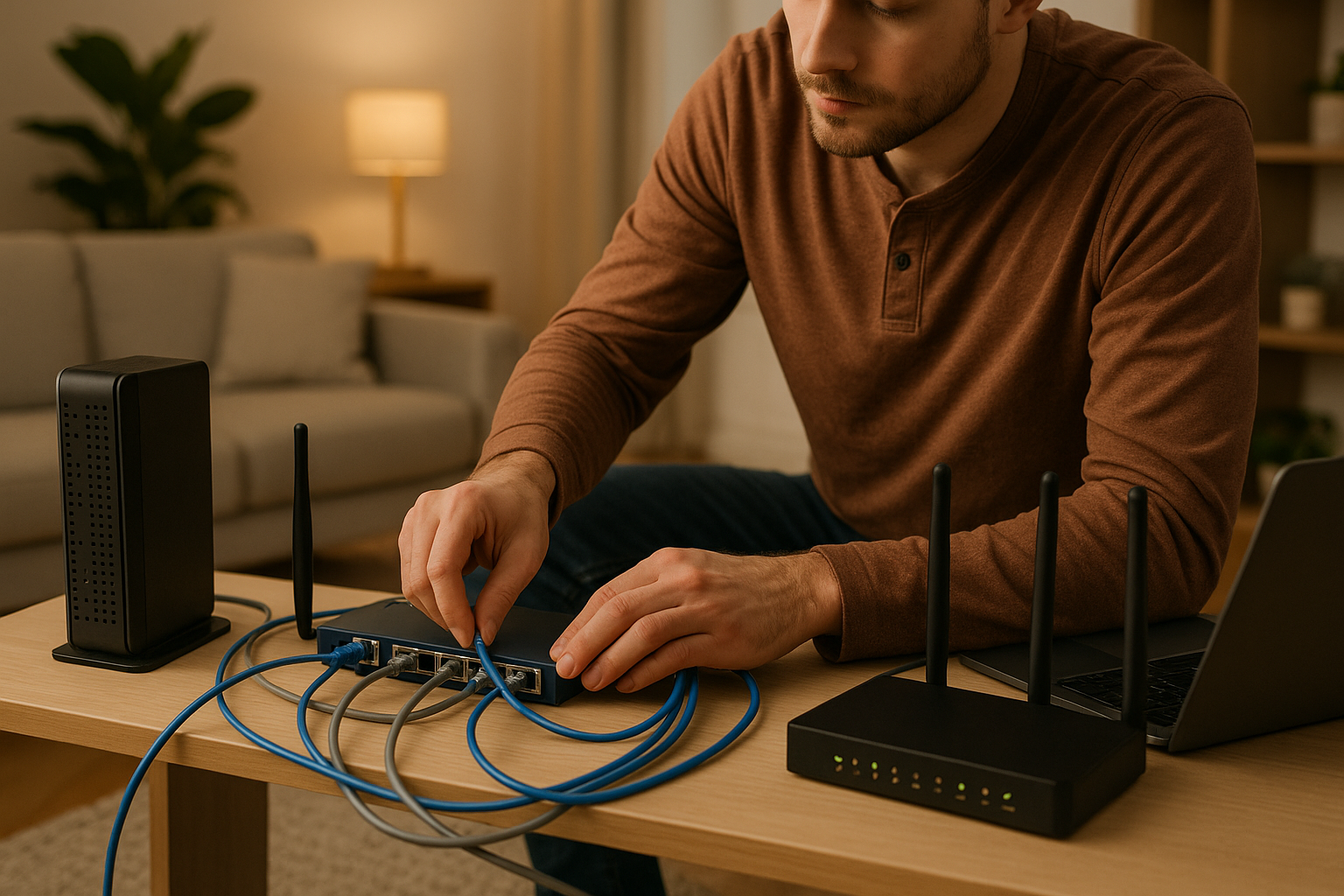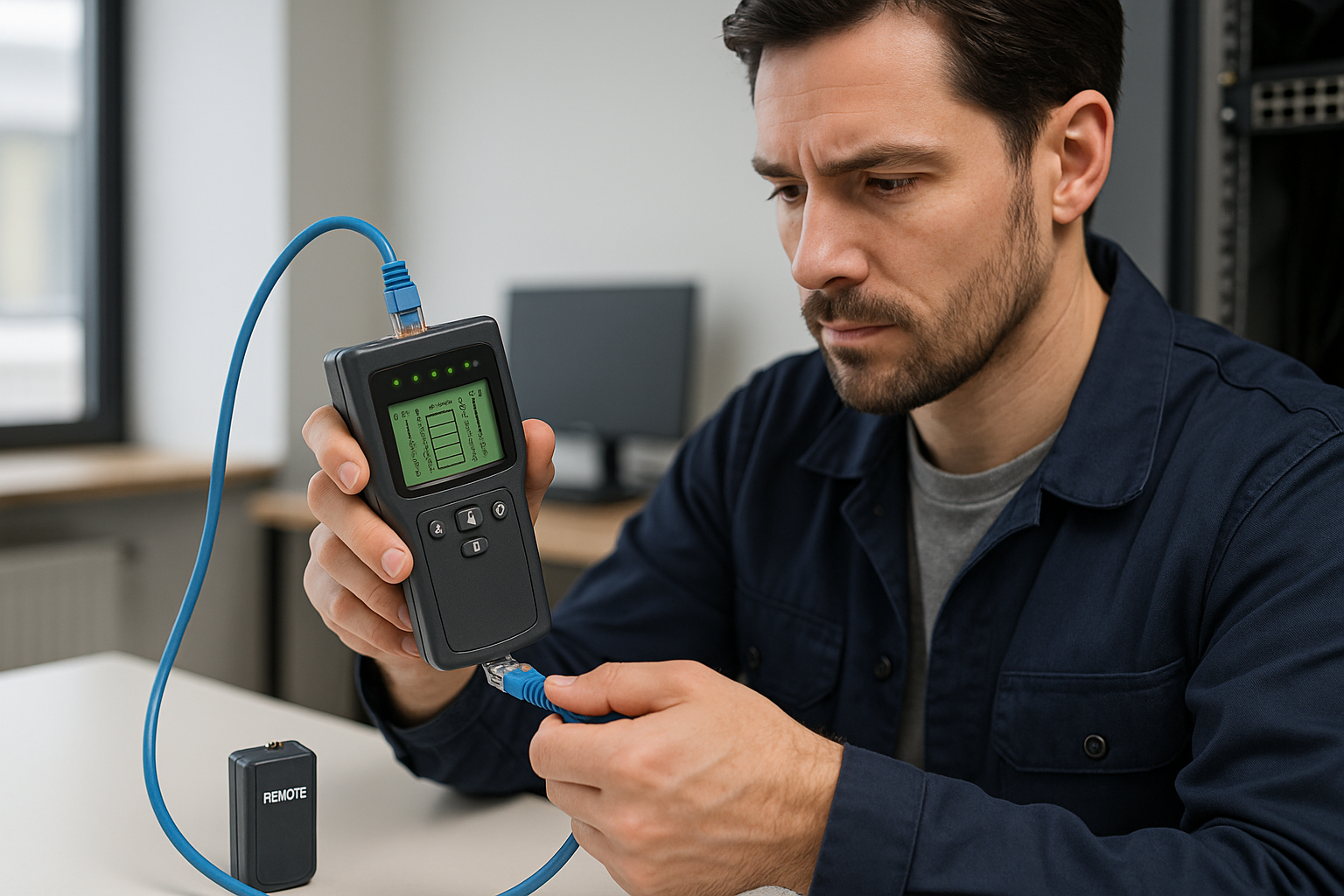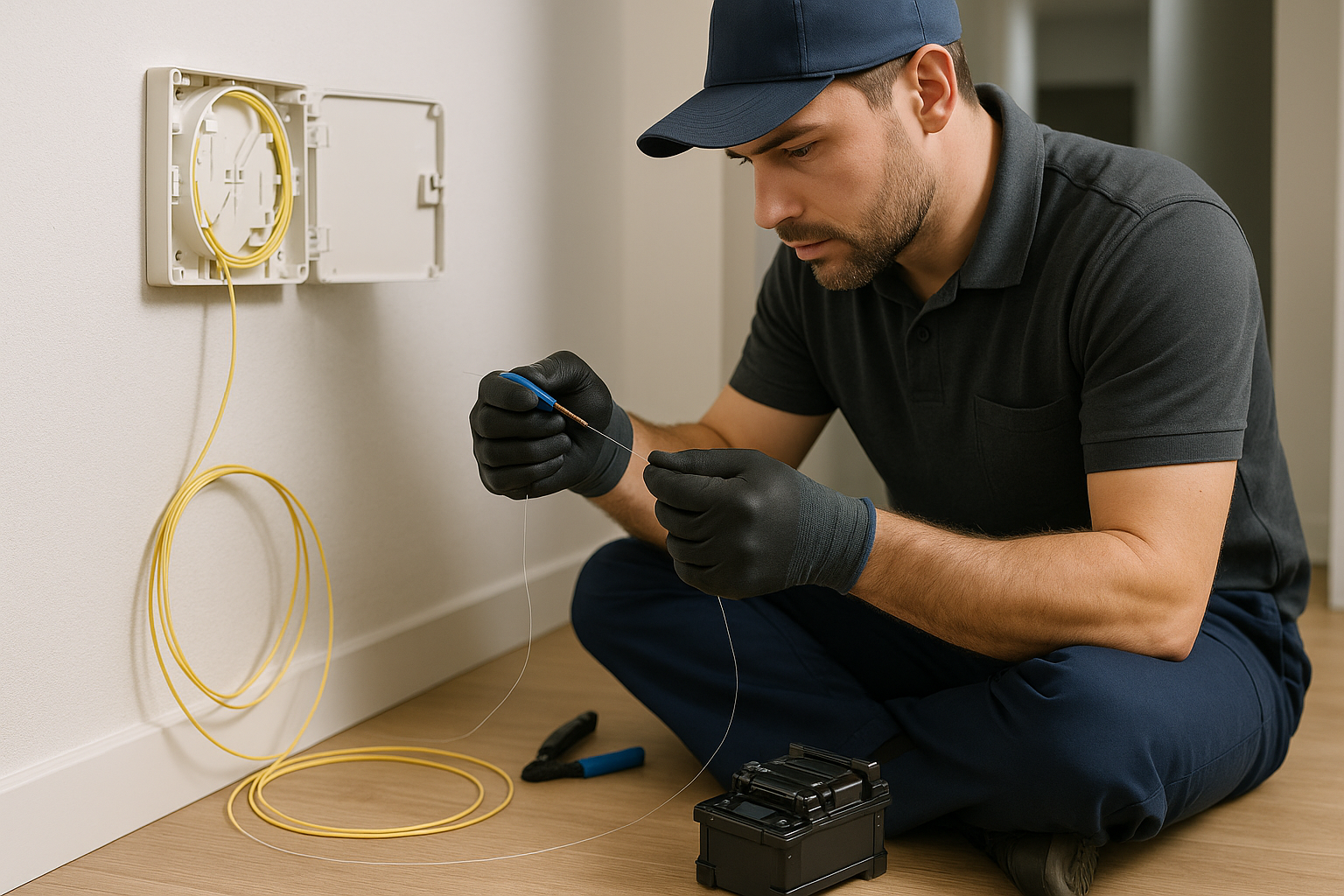What is a UTP cable?
- , by
- 5 min reading time

The Internet is becoming an increasingly important part of our lives; more and more things are done online. For a stable (home) network, it is therefore recommended to connect devices with a UTP cable. But what exactly is this? Read it below!
Products related to this item:
[button] UTP Cables [/button]
The Internet is becoming an increasingly important part of our lives; more and more things are done online. Just look at how many devices are connected to the Internet at home. It is probably much more than just your computer. Many people also use the Internet for devices such as the printer, their media box, the TV, the TV receiver and perhaps even a NAS.
All these devices need internet. For a stable (home) network it is therefore recommended to connect devices with a UTP cable . A UTP cable is a network cable, and is developed for data transfer and telephony. It therefore connects devices with each other or with the internet.
What does UTP stand for?
The abbreviation UTP stands for Unshielded Twisted Pair , or, literally translated "unshielded twisted pair". Let's clarify that: in the sheath of a UTP cable there are eight unshielded ( unshielded ) separate wires. Four pairs ( p air) of these are twisted together ( t wisted). A UTP cable is therefore not shielded, because this is sometimes useful, there are also shielded cables such as FTP cables. Read what an ftp cable is .

What is the function of the UTP veins?
The function of UTP cores is to transmit the signal. These cores are twisted in pairs to prevent interference in the signal. There are eight cores that are twisted in four pairs.
What categories of UTP cables are there?
UTP cables come in various categories and versions. These categories are indicated by the abbreviation "cat". For example, you have Cat5 (category 5), but also Cat8. Within these categories, there are also different types of UTP cables, such as UTP Cat5 and UTP Cat5e. The major difference within these categories is the different bandwidths that these cables can handle. Below you can see an overview of the various cables and the associated speeds:
- UTP Cat5, this has a transfer speed of 100mbit/s and a bandwidth of 100Mhz
- UTP Cat5e , this has a transfer speed of 1,000mbit/s and a bandwidth of 100MHz
- UTP Cat6 , this has a transfer speed of 1,000mbit/s and a bandwidth of 250Mhz
- UTP Cat6a , this has a transfer speed of 10,000mbit/s and a bandwidth of 500Mhz
- UTP Cat7 , this has a transfer speed of 10,000mbit/s and a bandwidth of 1,000MHz
- UTP Cat7a , this has a transfer speed of 10,000mbit/s and a bandwidth of 1,200Mhz
- UTP Cat8 , this has a transfer speed of 10,000mbit/s and a bandwidth of 2,000MHz
As you can see, the higher the category of the UTP cable, the higher the speed of the cable. However, a higher category is not always better. This is because a network consists of multiple components. For example, keep in mind that not all network equipment can process that much data. If the router can only process 100mbit/s and it is connected to a UTP Cat6 cable, the maximum speed will still only be 100mbit/s.
Protection of UTP cables
Officially, the UTP cable has no protection. The U in UTP stands for Unshielded. However, because in practice the word "UTP cable" is the same as a network cable, all cables that are shielded ("Shielded", see below) technically also fall under the term "UTP cable". However, to avoid confusion, a clear distinction has been made between shielded and unshielded network cables. Below you will find a clear overview of the various (partly) shielded UTP cables, and what their abbreviations mean exactly.
| Old name | New name | Cable shielding | Wire pair shielding |
| UTP | U/UTP | no | no |
| STP | U/FTP | no | foil |
| FTP | F/UTP | foil | no |
| S-STP | S/FTP | wickerwork | foil |
| S-FTP | SF/UTP | foil, wickerwork | no |
Thickness of the UTP cable
The thickness of the cores of a UTP cable are indicated in AWG. AWG stands for "American Wire Gauge". With UTP cables you often see that this value is 23AWG or 24AWG. The rule that applies to AWG is: the lower the number, the thicker the cable. This can be explained by the way the cable is made. It corresponds to how often the cable is pulled through a mold. The more often that happens, the thinner it will be.
What is a UTP connection?
A connector can be placed on the end of a UTP cable to connect the cable. This is also called an RJ45 connection . For many people, this connection is also known as "internet plugs".
The UTP cable therefore exists in various protected and unprotected variants. In addition, there are various categories of UTP cables, each with a maximum speed and bandwidth. Which UTP cable is most suitable for you depends on the applications for which you are going to use it and the number of devices that you connect to it. View our wide range of UTP cables here .
Learn more about the different categories of UTP cable and when we recommend them:
Find the best cable for your network:
[button] Shop UTP Cables in our webshop [/button]
Tags
Related categories
Check out our other blogs
-

, by Jarno Heideman How do you easily set up a home network yourself?
-

, by Jarno Heideman What are the color codes of UTP cables and how do you use them correctly?
-

, by Jarno Heideman How do you test a UTP cable without making mistakes?
-

, by Jarno Heideman How do you connect fiber optic yourself without any hassle at home?



